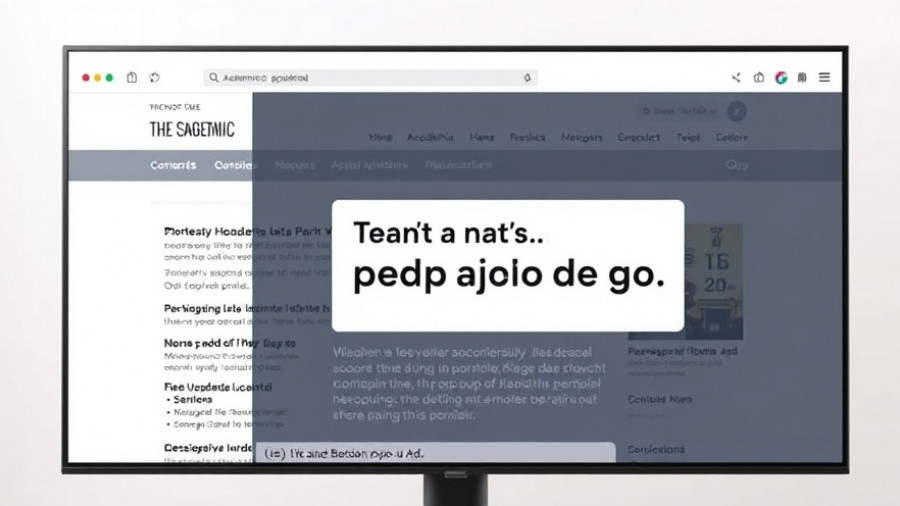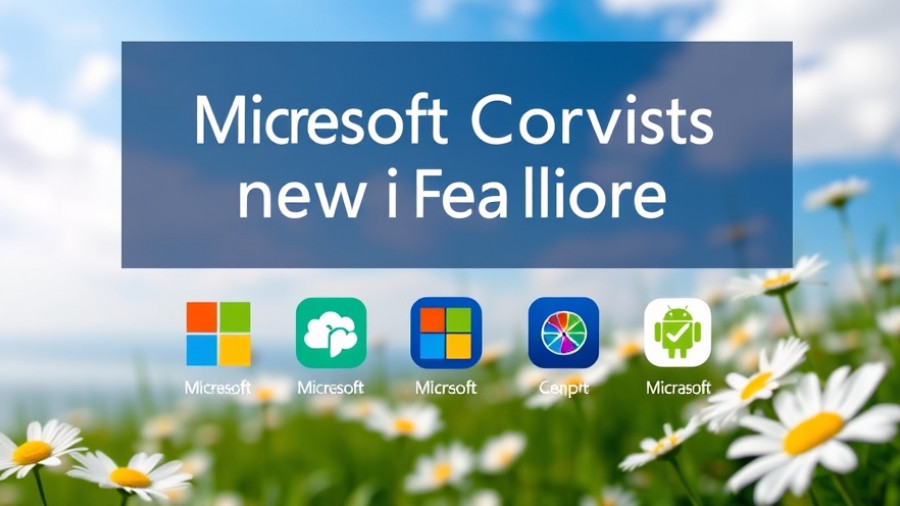
Microsoft Takes a Bold Step in AI Model Diversity
In a significant move within the tech landscape, Microsoft has expanded its AI capabilities by integrating models from Anthropic into its widely used Microsoft 365 Copilot system. This shift marks a major departure from its longstanding reliance on OpenAI, with whom it had nurtured a partnership since investing over $15 billion in 2019. On September 24, Microsoft unveiled a newly configured enterprise generative AI system that now includes options for Claude large language models (LLMs) developed by Anthropic, a rival to OpenAI.
The Growing Demand for Multi-Model AI Systems
The strategic decision by Microsoft comes as businesses increasingly seek to incorporate multiple AI models into their operations. As R "Ray" Wang, CEO of Constellation Research, explains, "This has been going on for a while. Microsoft partnered with a leader, learned as much as they could and incorporated what they needed to, and then moved on." Today's businesses are recognizing the necessity of flexibility and multiple options in AI systems. Analysts, like Mark Beccue from Enterprise Strategy Group, highlighted that Microsoft's move isn't just about offering choices; it's about further securing its position within the competitive enterprise generative AI landscape.
OpenAI's Transformative Partnership with Nvidia
Meanwhile, OpenAI isn't sitting still. The organization has recently secured a partnership with Nvidia, further solidifying its market position. Nvidia's astounding $100 billion investment in chip supplies for OpenAI follows another major contract with Oracle to provide the computational power needed for developing new AI models. This separation of paths suggests that both Microsoft and OpenAI are positioning themselves independently to explore new horizons in artificial intelligence.
Implications of the Copilot Model Shift
With Copilot now including options like Claude Sonnet 4 and Claude Opus 4.1, users can customize their experiences more effectively based on their specific needs while also benefiting from the robust capabilities of OpenAI models. Critics of this shift argue that Microsoft’s transition toward Anthropic could reveal a reactive strategy in the wake of OpenAI's advancements. Nevertheless, Anshel Sag of Moor Insights considers the partnership with Anthropic sensible, particularly as it focuses on responsible AI and safety—elements that customers increasingly value.
The Competitive Landscape of AI
This multi-model maneuver by Microsoft represents more than just an expansion of options in Copilot; it highlights a larger trend in the AI market where companies are diversifying their partnerships to avoid dependence on a single provider. This pattern reflects similar strategies seen in other tech giants like Google and Amazon, who have long embraced a variety of models within their AI platforms.
What Lies Ahead for AI Users?
As Microsoft leans into its multi-model Copilot offering, users can expect a more tailored experience from their generative AI systems. The freedom to choose among diverse models could lead businesses to experiment with different functionalities, testing out which models align well with their operational goals. Moreover, this shift raises important considerations about adaptability—perhaps emphasizing a new era where organizations seek the right algorithm rather than being wedded to one.
Conclusion: A Strategic Realignment in AI Dynamics
In conclusion, the integration of Anthropic’s models into Microsoft Copilot not only enhances user choice but also signifies an evolving generative AI landscape where collaboration and competition coexist. As AI continues to revolutionize business practices and consumer experiences, adapting to these developments is crucial. Companies must remain agile, ready to adjust to the rapidly changing AI environment to harness the maximum potential from the technologies at their disposal.
 Add Row
Add Row  Add
Add 




Write A Comment